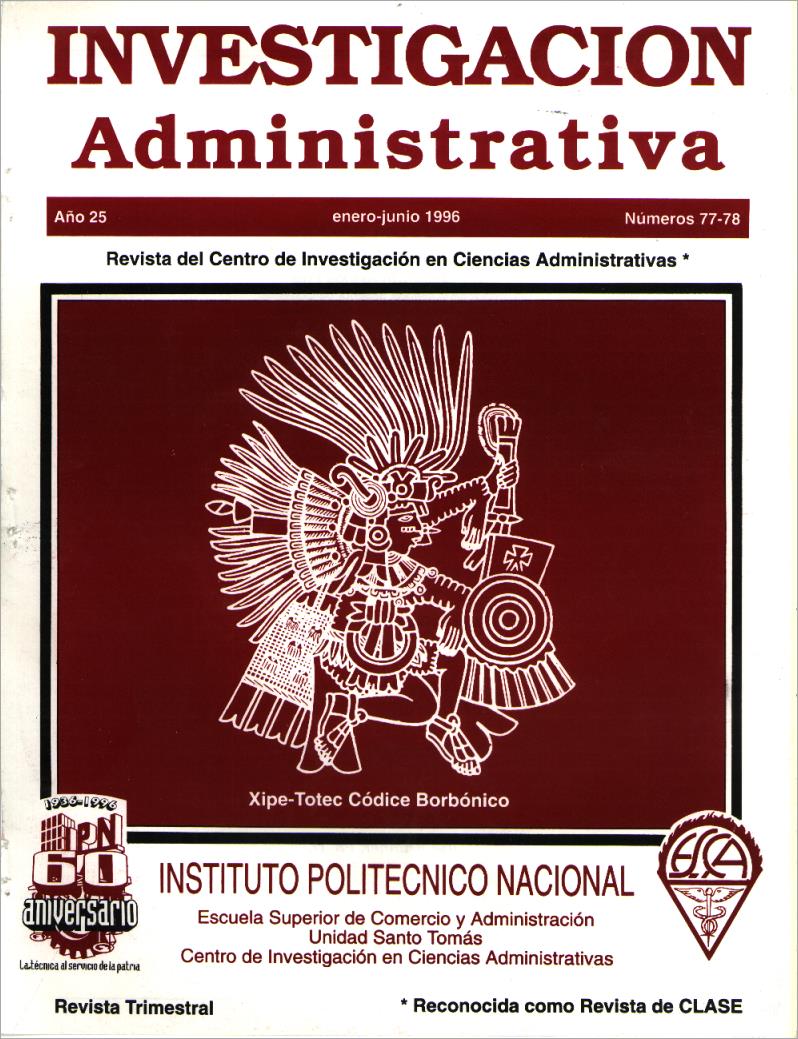INTRODUCTION TO THE CASE STUDY METHOD
Main Article Content
Abstract
Article Details

This work is licensed under a Creative Commons Attribution-NonCommercial 4.0 International License.
References
Alvarez García, Isaías; INTRODUCCIÓN AL MÉTODO DE ESTUDIO DE CASOS, CICA, México, mayo 1991.
Andrews, Kenneth R., THE CASE METHOD OF TEACHING HUMAN RELATIONS AND ADMINISTRATION (Combridge, Mass., Harvard University Press 1953.
Argyle, Michael, and Trevor Smith, TRAINING MANAGERS, The Acton Society Trust, 1962.
Benson P, Shapiro, INTRODUCCIÓN AL MÉTODO DE CASOS, Harvard Busines School, nota técnica I NAP, abril 1993.
British Institute of Management, CASE STUDY PRACTICE: AN ACCOUNT BY SPECIALISTS WORKING IN DIFFERENT BRANCHES OF MANEGEMENT EDUCATION OF THEIR EXPERIENCES IN THE CASE ESTUDIES, The Sidney, Press, Ltd. Bedford, 1960.
Cabot, Hugh and Joseph A. Kahl, HUMAN RELATIONS: ‘CONCEPTS AND CASES IN CONCRETE SOCIAL SCIENCE, Cambridge Mass., Harvard University Press, 1953.
Copeland, Melvin T. AND MARK ON ERA, Boston, Little, Brown & Company 1958.
Davis, Russell G, DOCTORAL DISERTATION, Harvard University, 1955.
Hunt, Pearson: THE CASE METHOD OF INSTRUCTION, Harvard Educational Review, summer, 1951, XXI, pp. 175-192.
Lawrence, Paul r, AND OTHER FACULTY MEMEBERS OF TEHE GRADUATE SCHOOL OF BUSINESS ADMINISTRATION, Harvard University; CASES, CONCEPTS, AND RESEARCH FINDINGS, The Dorsey Press and Richard D. Irwin, Inc. Homewood, Ltd. 1961.
Mariscal Torres, Javier: EL MÉTODO DE CASOS, Tésis Doctoral, ESCA, 1974.
McNair, Malcom P. and Anita C. Hersum, THE CASE METHOD AT HE Nueva York, McGraw-Hill Book Company, 1954.
Pauline V, Young; METODOS CIENTIFICOS DE INVESTIGACION SOCIAL, 3a. Edición UNAM.
Penchansky, Roy, HEALTH SERVICES ADMINISTRATION: POLICY CASES AND THE CASE METHOD, Cambridge, Mass., Harvard University Press, 1968.
Pigors, Paul, and Faith Pigors: CASE METHOD IN HUMAN RELATIONS: THE INCIDENT PROCESS, McGraw-Hill Book Company, Nueva York 1961.
Pigors, Paul y Myers Charles: LA ADMINISTRACIÓN DE PERSONAL, Edit. CECSA, México, 1969.
Terry, George R: CASE PROBLEMS IN BUSINESS AND INDUSTRIAL MANEGEMENT ed., William C. Bruwn Company, Dubuque, Iowa, 1955.
Tesoro, José Luis: PAUTAS PARA LA UTILIZACIÓN Y ELABORACIÓN DE CASOS DE ESTUDIO PARA ACTIVIDADES DE FORMACION EN GERENCIA PUBLICA, RIGEP, Caracas, 1992.
Towl, Adrew R„ TO STUDY ADMINISTRATION BY CASES, Boston; División of Research, Harvard Bussines School, 1969.
Towle, J.W. and C.A. Dauten: LIVIND CASES MANAGEMENT EDUCATION, Advanced Magament, may, 1957, Vol. 22 No. 5 pp. 24-26.
Hernandez y Rodríguez, Sergio: Casos y Practicas de Administración de Recursos Humanos, Editorial Trillas, México, 1980.
Kowalski Theodore J: Case Studies on Educational Administration, Longman, New York, 1991.
Wasserman, Selma: Getting Down to Cases. Learning to teach with case Studies, Teachers College Press, Columbia University.
Yin R: Case Study Research, Sage Publications, Beverly Hills, CA. 1984.

